The World’s Largest Wetland Is Burning - And So Are Its Jaguars
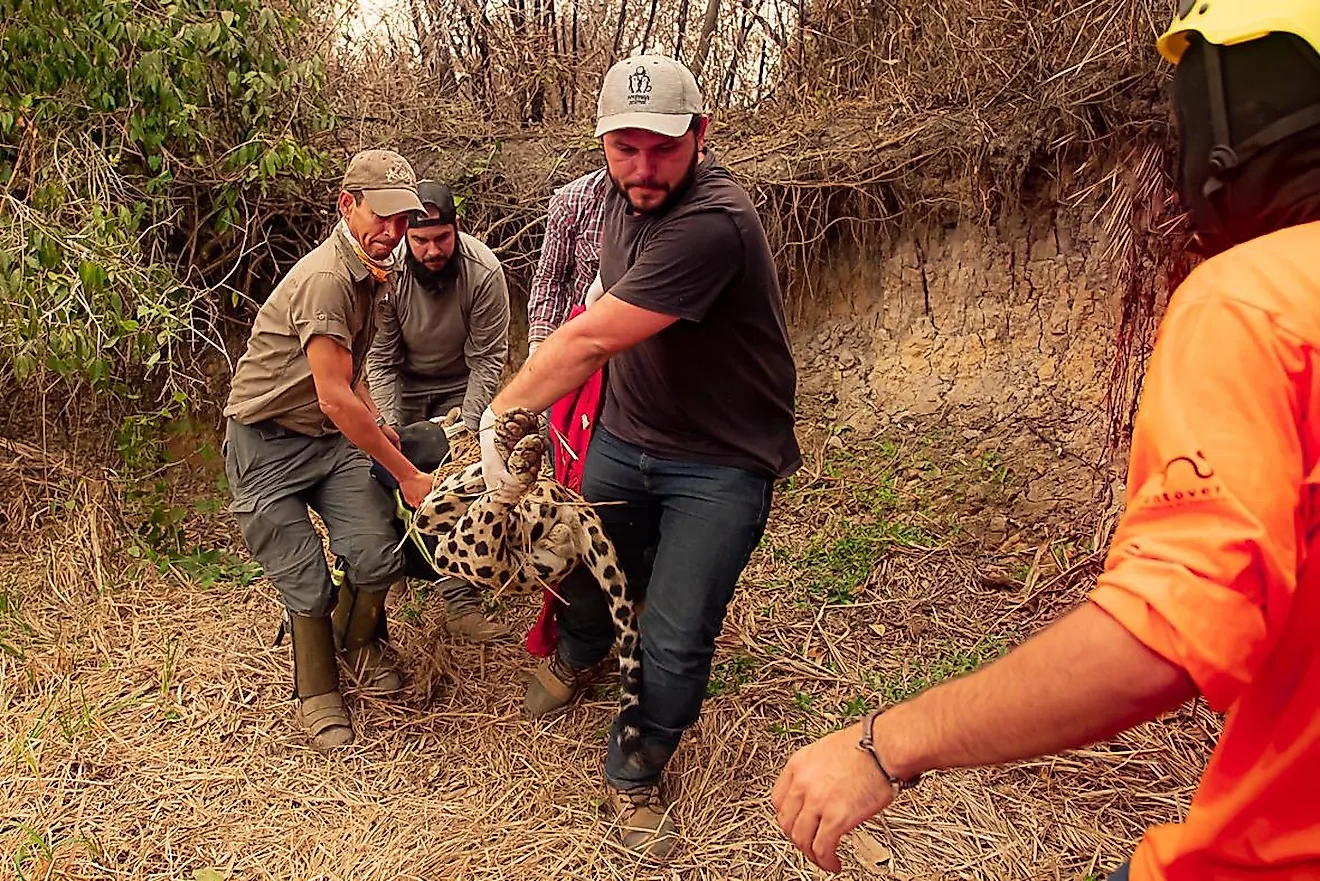
Earth's largest tropical wetland is burning, and with it, the species that call it home. Hit by one of the worst wildfires in decades, the Pantanal has lost extensive tracts of its massive floodplain to fires this year. Vital wildlife habitats have transformed into ashes, and the local economy has been wrecked. Such trying conditions have demanded speedy actions from NGOs like Panthera, the global wild cat conservation organization. Rescue and conservation teams from such organizations are working hard to control the fires in the Pantanal and protect vulnerable wildlife including the jaguars from the flames.
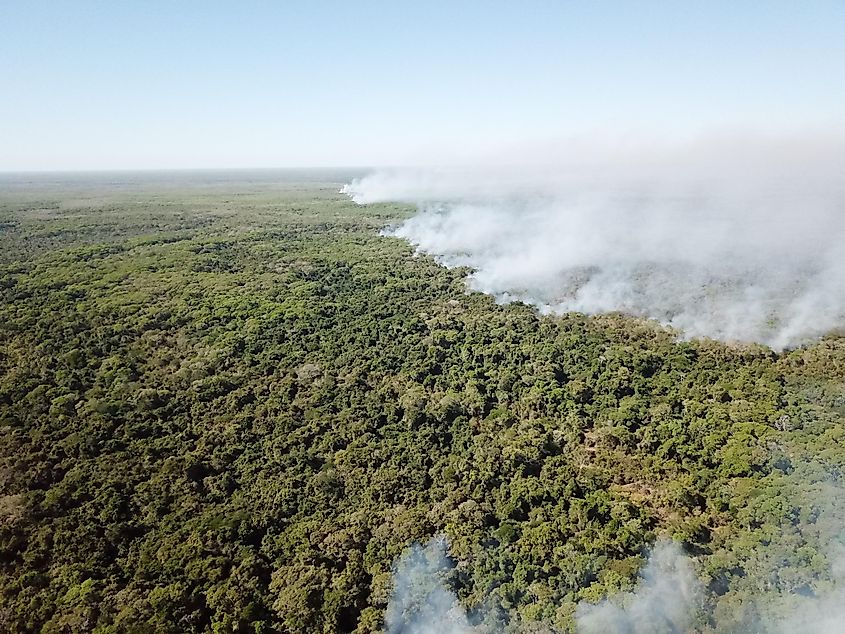
"Up to now, 27% of the Pantanal has burned," Fernando Tortato, Jaguar Program Conservation Scientist for Panthera, informed World Atlas. He is based at Jofre Velho Ranch, a 10,000-acre model jaguar conservation ranch located in the heart of the Pantanal.
"The fires altered and impoverished the habitat of the jaguar in the Pantanal. The fires were so intense this year that every single person in the Pantanal was negatively affected, including large ranchers and small riverside communities," he further stated.
The Story Of A 'Wet'land On Fire
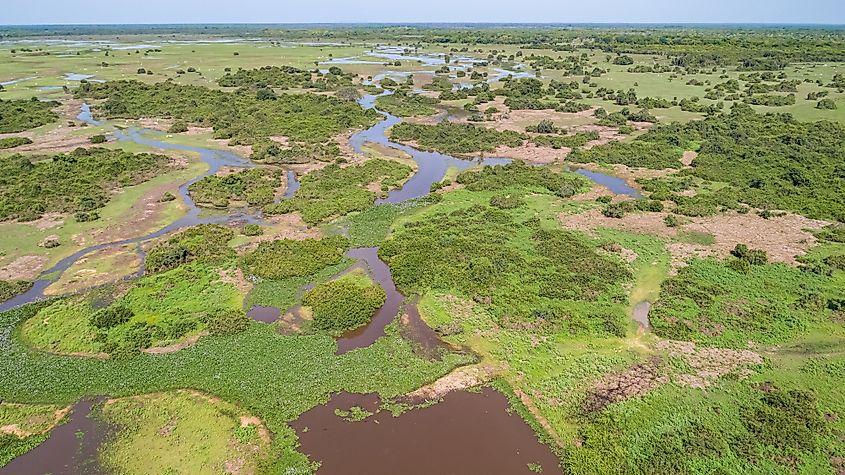
The Pantanal is a fascinating and unusual place. Occupying around 195,000 square kilometers across parts of Brazil, Bolivia, and Paraguay, the Pantanal is a mosaic of inundated grasslands, tropical forests, and savannas. Although less famous than neighboring Amazon rainforests, the biodiversity of this wetland is no less incredible. It is home to at least 3,500 known plant species, 159 species of mammals, 656 species of birds, 98 reptilian species, 53 species of amphibians, 325 fish species, and 9,000 invertebrate species.
Every year, nature's drama unfolds in the Pantanal when torrential downpours from December to March cause the Paraguay River and its tributaries to swell and drown nearly 80% of the region. During this time, the ground-dwelling species huddle in the narrow strips of forest that are left dry. Land appears again in May as the water recedes in the Pantanal. Many species of wading birds now feed on the fish abandoned by the receding floodwaters. The dried-up lakes transform into savannahs teeming with wildlife like jaguars, ocelots, and capybaras.
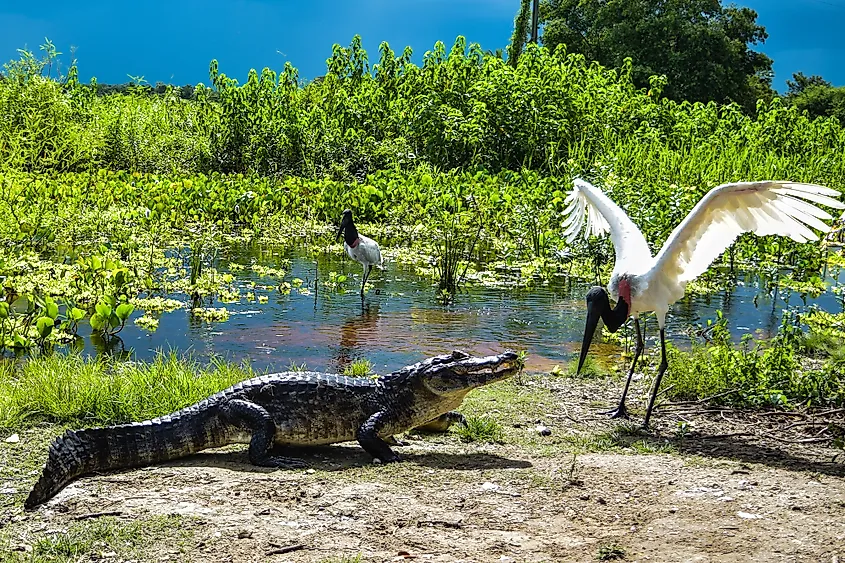
The seasonal changes described above have been happening for millennia in the Pantanal. However, human intrusion and influence have disrupted nature's ways in recent times. The rapid development of cattle ranching activities in and around the region and climate change have invited changes that are not welcome.
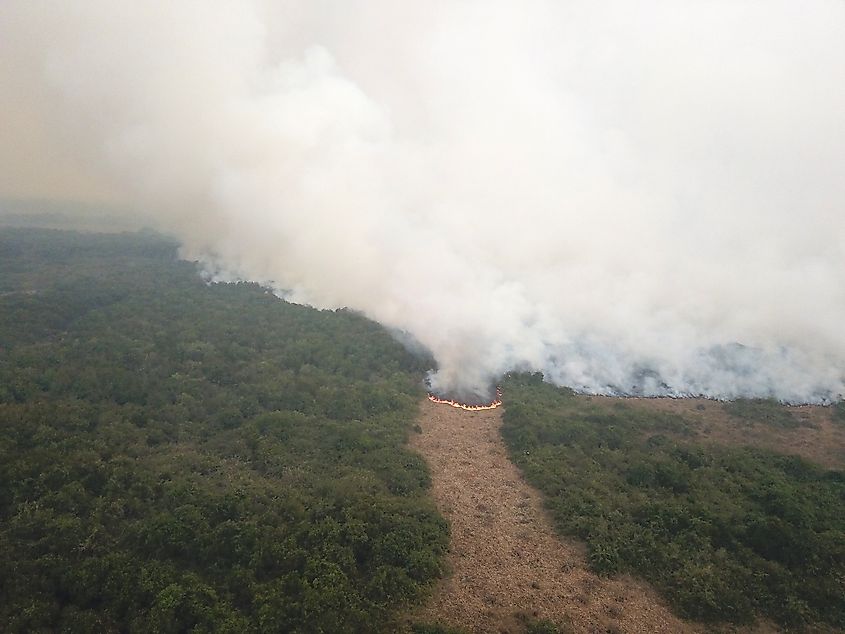
Conservationists are worried that the burning of the Pantanal this year is a sign of difficult times ahead. Over 20,000 fires have already engulfed the region. While occasional wildfires are common, the fires this time appear unstoppable. Scientists are probing into the cause of this disaster. Climate change seems to be the primary culprit leading to unusually dry conditions. Scientists also blame deforestation of land in and around the Pantanal as an additional factor fuelling the fires. Worse still, these fires are mostly ignited by people - especially livestock farmers to clear land for setting up ranches. The persistent drought only made the fires spread far and wide, wreaking the lives and livelihoods of those who were initially responsible for starting them.
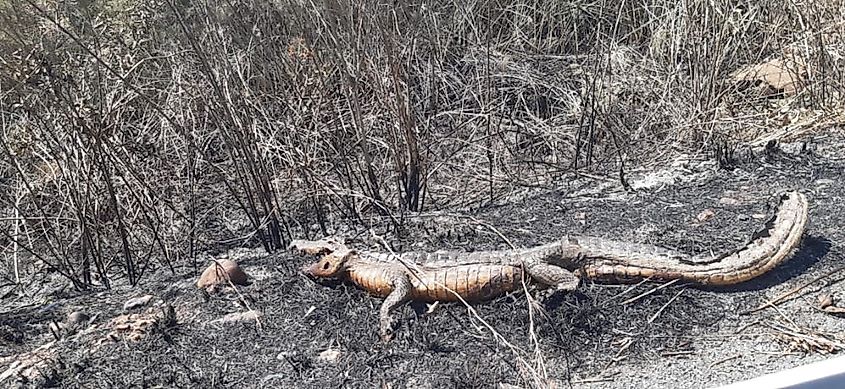
The wildlife has not escaped as well, mainly reptiles and amphibians that cannot outrun fires easily. The jaguars of Pantanal, the apex predators of the ecosystem, have also suffered as discussed below.
Jaguars In Jeopardy
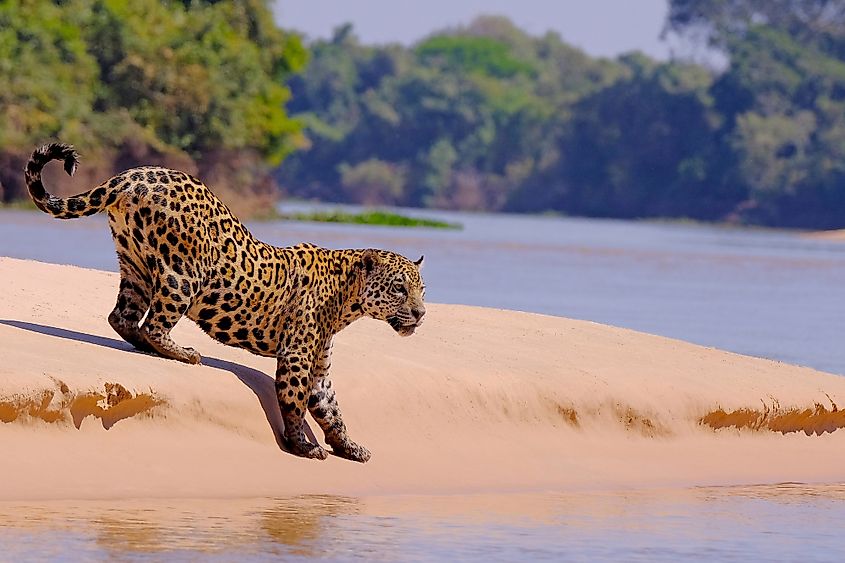
Jaguars are Americas' most enigmatic predator and are distributed across 18 range countries from northern Mexico to Argentina. These magnificent predators occupy a wide array of habitats from arid shrublands of Mexico to the dense tropical rainforests of Brazil as well as the seasonal wetlands of the Pantanal. According to estimates, around 2,000 jaguars inhabit the jaguar corridor of the Pantanal. As per reports, the recent fires have negatively impacted the habitats of about 600 of these jaguars. And that is not all. The fires have also killed and injured some of them.
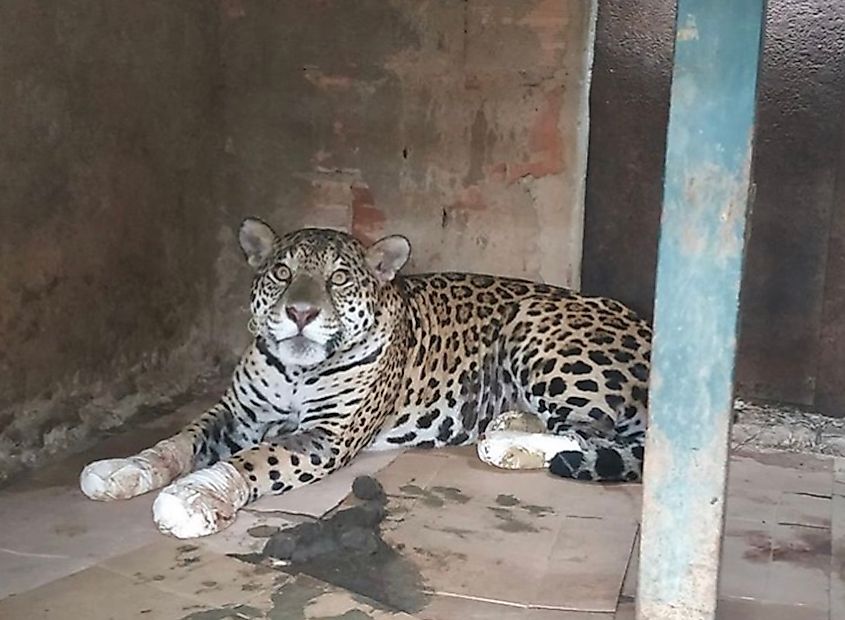
"Important areas for jaguars have been affected, such as the Cuiaba River Corridor and protected areas such as the Pantanal National Park and Encontro das Aguas State Park. The fires reduced the availability of resources in general for Pantanal fauna, also affecting its top predator, the jaguar. In addition, this creates more social pressure for the surviving jaguars, which are now competing in the remaining unburnt areas for a smaller number of prey species," Tortato explained the threats to jaguars from the fires.
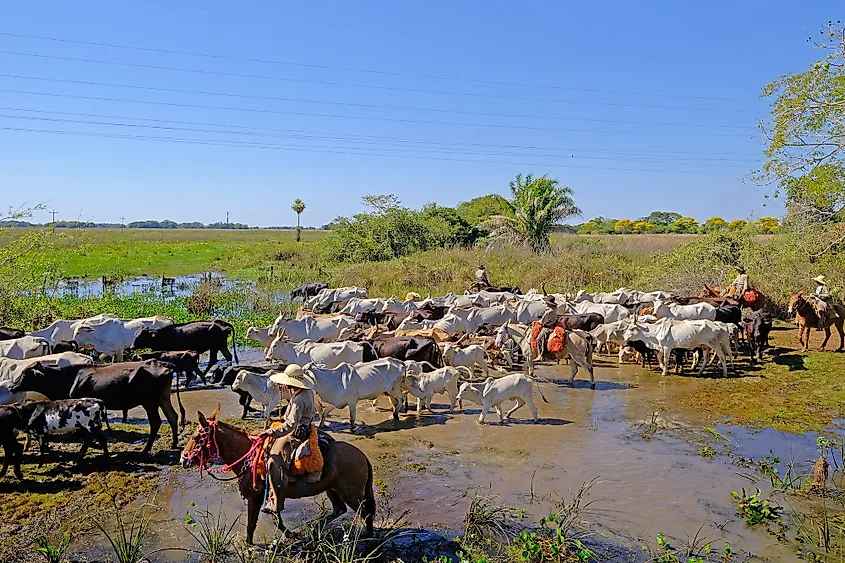
However, it is not just the burning of their habitat that paints a bleak future for the jaguars of the Pantanal. Prior to these fires, the well-being of these big cats was already jeopardized by another major menace - human-wildlife conflict.
"The Pantanal is composed of private properties, including mostly ranches, which make up 95% of the landscape. Thus, the main threat to jaguars preceding the 2020 wildfires has been retaliatory killing of jaguars due to jaguar attacks on livestock or other human-jaguar conflicts," informed Tortato.
A Warning Not To Be Ignored
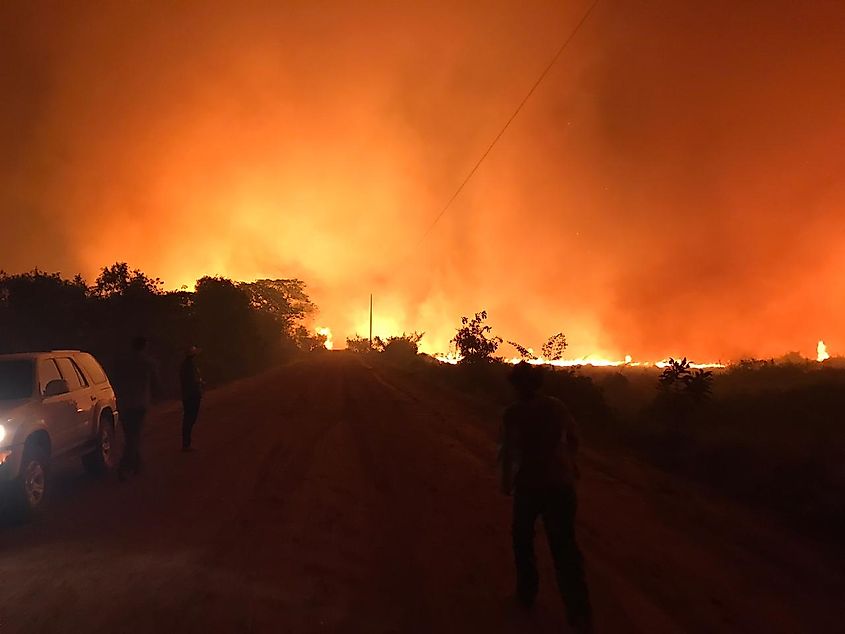
The burning of the Pantanal is both a cause and an effect of climate change. As mentioned earlier, climate-change-induced drought is believed to have fuelled the fires of the Pantanal this year. However, the burning of this wetland area, one of the Earth's most effective carbon sinks, also released huge volumes of greenhouse gases into the atmosphere completing the vicious loop - and contributing to the processes that lead to global warming.
Being both the umbrella and indicator species in the ecosystem, the death, and injury of jaguars, and the destruction of their habitat are also a cause of alarm. The presence of stable populations of jaguars indicates a well-balanced or healthy ecosystem and the fires seem to have disrupted this balance.
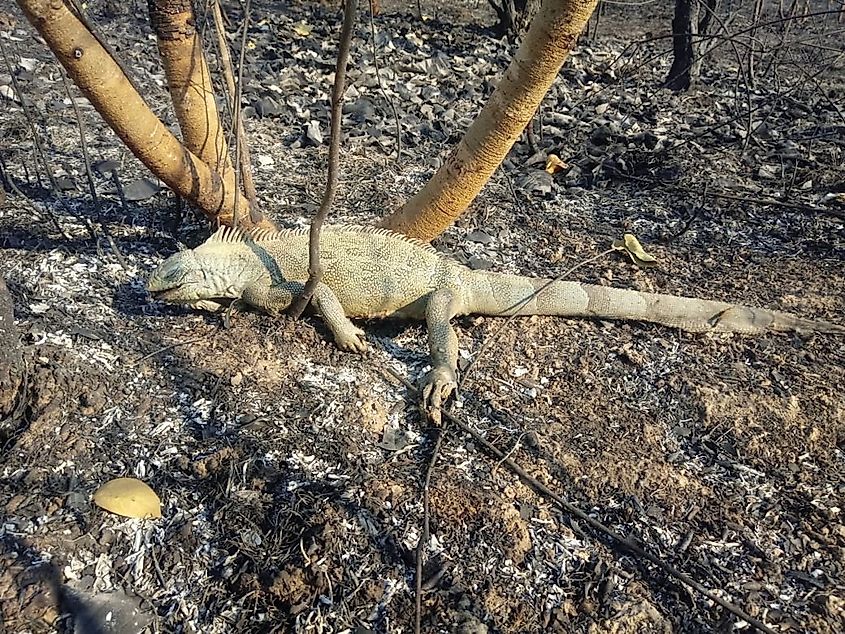
Conservationists believe these are warning signs that are not to be ignored and conservation organizations like Panthera are not leaving any stone unturned to protect the jaguars, their habitat, and other wild flora and fauna of the Pantanal. Panthera has already participated extensively in firefighting efforts in the region. Natural areas have been isolated with firebreaks, important refuges of wildlife have been protected, and the spread of fires into savannas and riverine forested areas have been prevented.
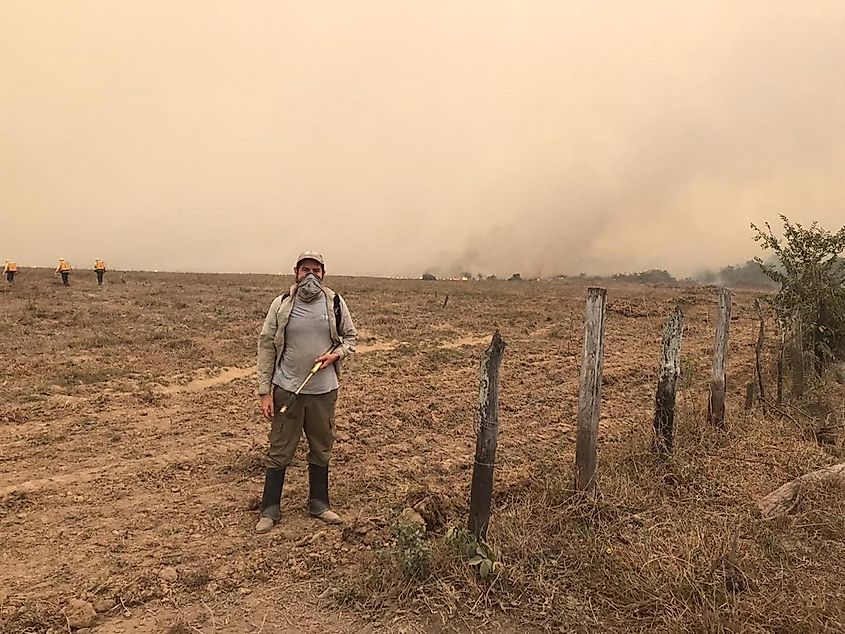
"Our motto was that every hectare saved would make a difference," said Tortato.
"Due to the strategic location of Panthera’s Jofre Velho Ranch near government-protected areas like the State Park Encontro das Aguas and other wildlife protecting ranches (e.g.fazenda Sao Bento), Panthera gave logistical support to firefighters, governmental institutions and veterinarians teams who were in the region, trying to prevent the spread of fires and rescuing various species affected by the fires," Tortato continued.
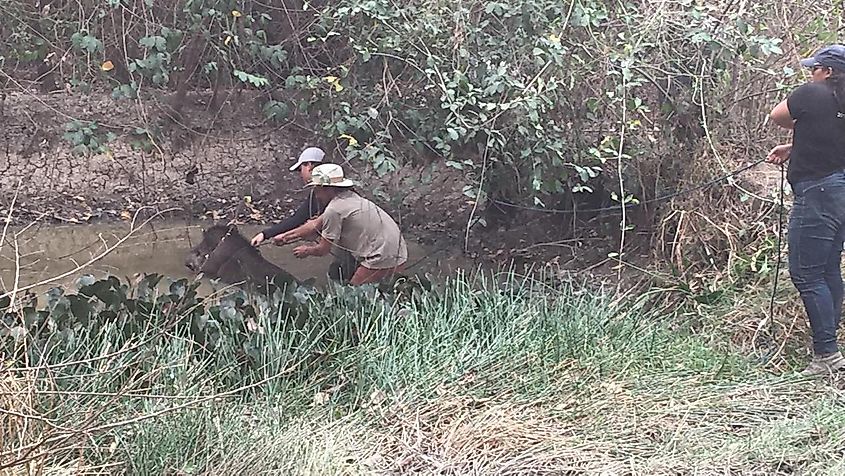
He also praised the impressive unity exhibited by the local community and ranch owners in firefighting and rescuing wildlife by joining forces with NGOs like Panthera & Aecopan, and Government support entities like Marines, Bombeiros, and Sema-ICMBio Brigadistas.
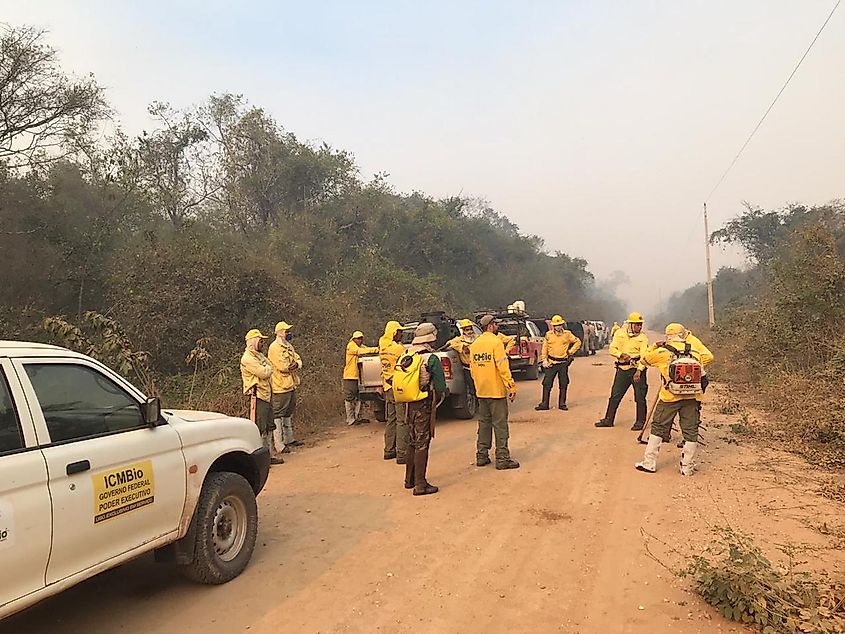
While the united involvement of so many individuals and organizations in protecting the Pantanal and the impending rains give hope of ending this year's dreadful fires, a long-term solution is much needed to prevent such mishaps in the future.
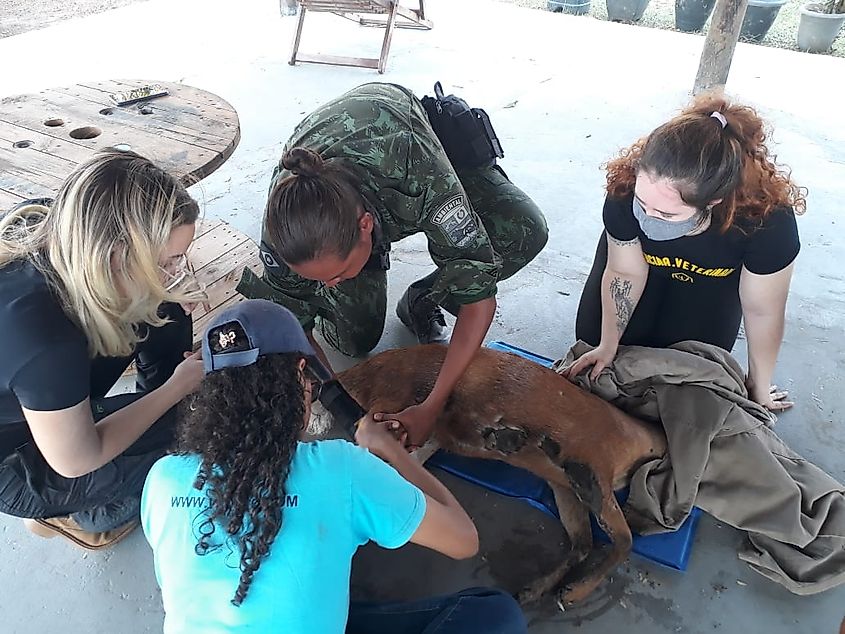
Tortato suggested several measures in this direction that can be adopted to protect the Pantanal and its wildlife from wildfires:
"Several measures are necessary, including the natural restoration of areas affected by fires; strengthening the management of protected areas; creating and supporting rapid response mechanisms to fight fires; and supporting sustainable economic activities like eco-tourism and jaguar friendly cattle ranches. A comprehensive fire prevention strategy is additionally required through education of local communities and ranchers to prevent criminal fires at the wrong time of the year; the punishment of culprits that intentionally set destructive fires; and prevention through the creation of firebreaks constructed at the beginning of the dry season and the proper provision of firefighting equipment & machinery," he said.
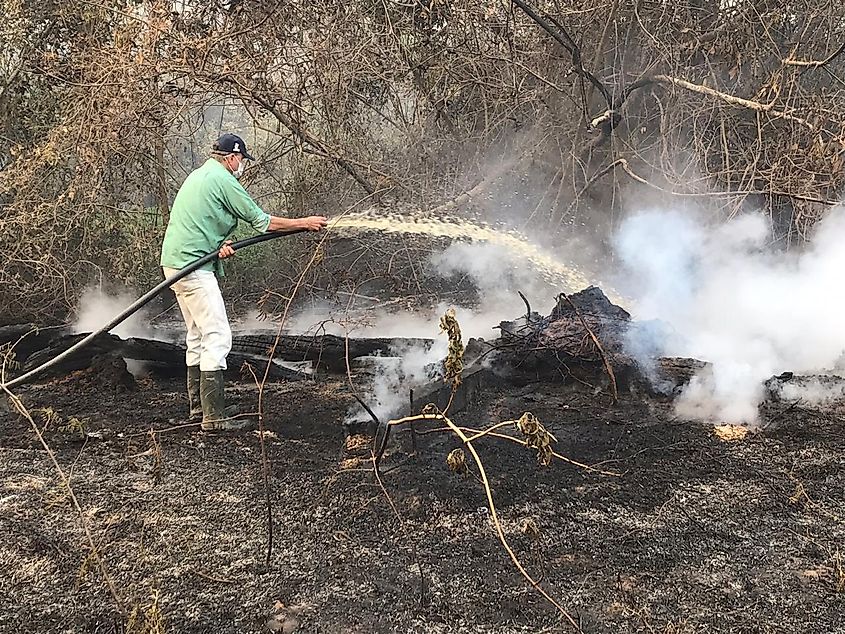
While fighting and preventing future wildfires are a necessity to protect the Pantanal, reducing human-wildlife conflict situations is also vital if its apex predators are to be given a secure future. In 2014, Panthera established a demonstration or model ranch, the Jofre Velho Ranch to teach local ranchers and farmers to protect their cattle from ranchers and create a jaguar- friendly environment. It is part of Panthera's Jaguar Corridor Initiative that aims to protect jaguars across their entire 6 million square kilometer range. Simple to long-term solutions are tested and tried at the ranch like putting bells on cattle to adding water buffaloes to herds to protect the livestock from jaguars.
Ousando 'The Daring's' Happy Ending
At the end of the day, it is success stories like that of Ousado that keep the conservationists motivated.
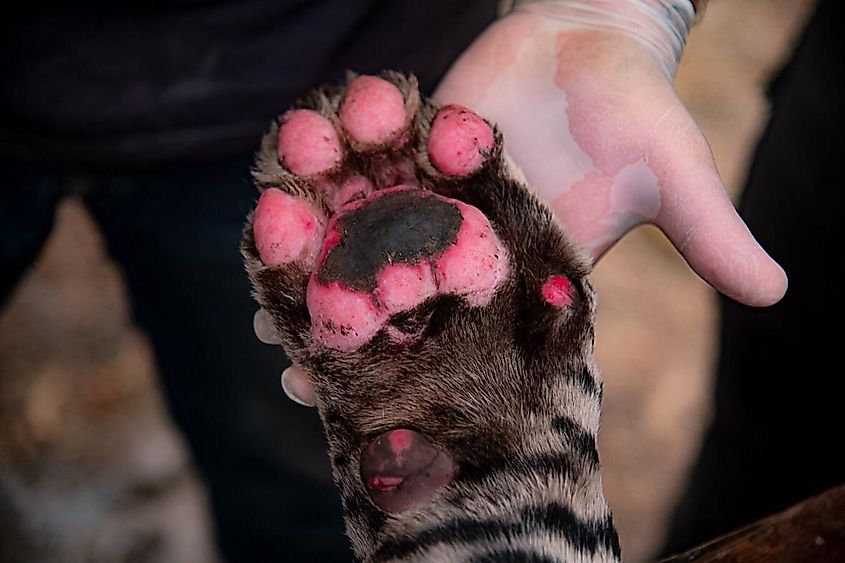
Ousado (meaning “daring”), a male jaguar, was rescued around a month earlier by Tortato and Panthera partners from the burning Pantanal. He had suffered burn injuries to his paws from the fires.
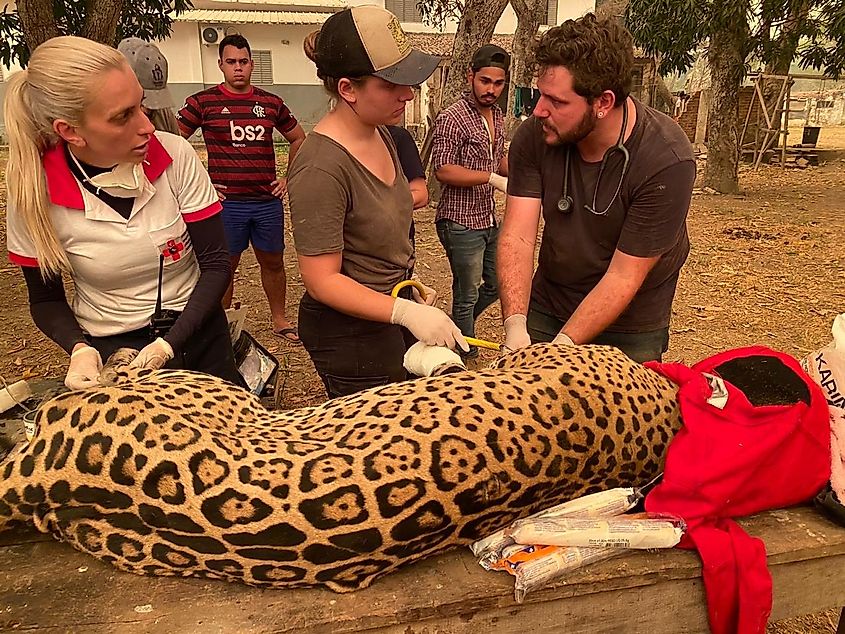
The rescuers admitted him to a veterinary hospital where ozone and laser therapy helped heal his paws.
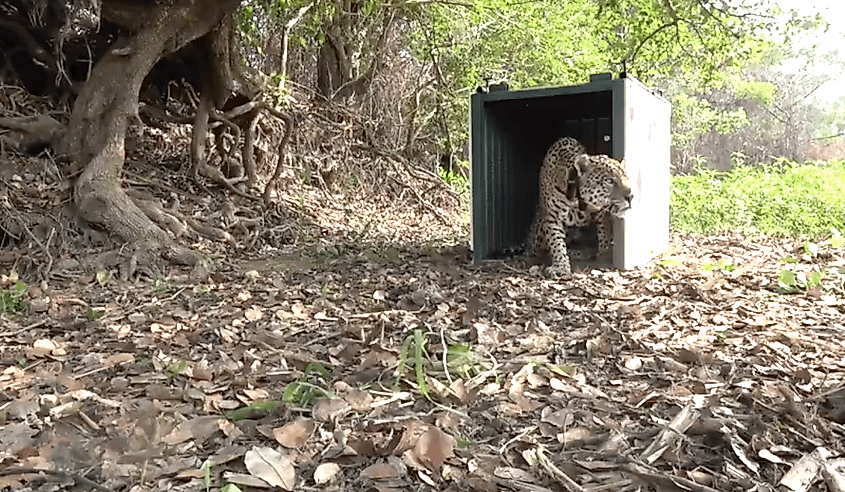
On October 19, he was released back into the wild with a GPS collar so that Panthera and partner organizations can monitor his readaptation to the wild.











